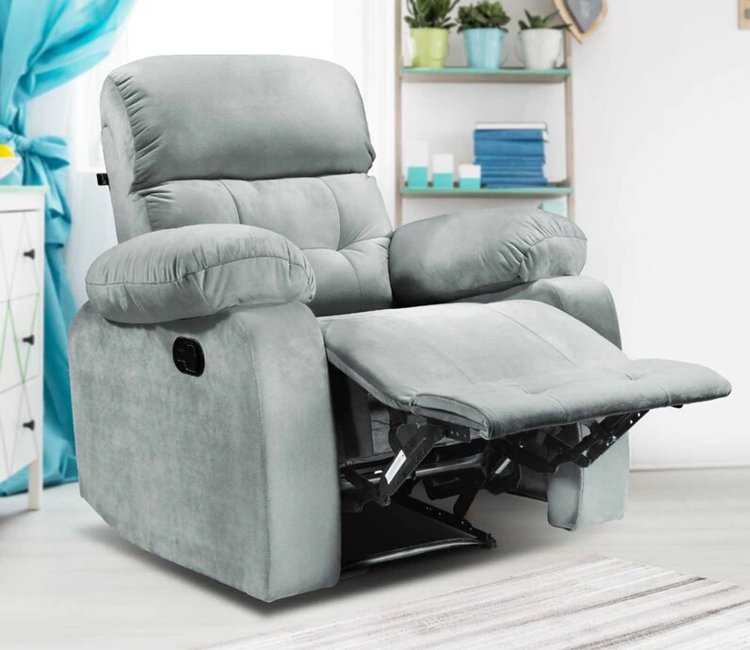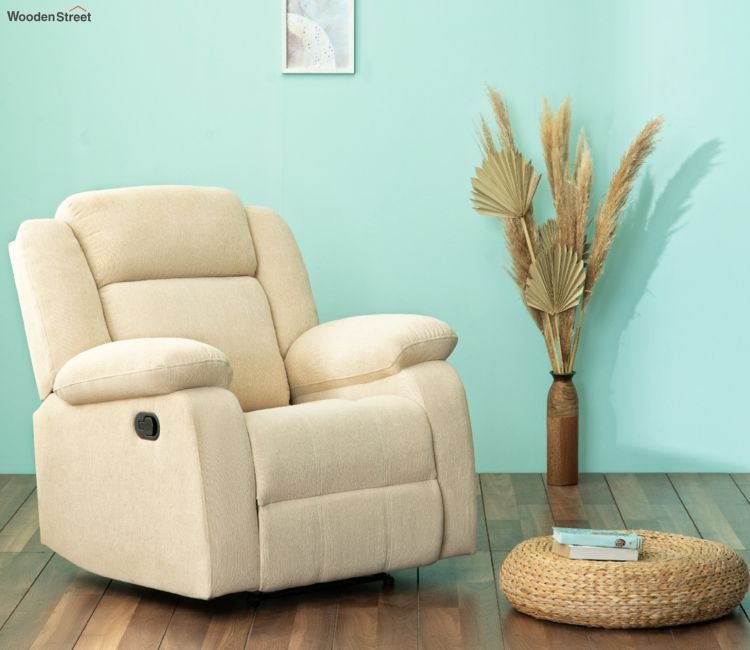How to Maintain and Care for Your Recliner Chair to Ensure Long-Lasting Comfort
Recliner Chair

Recliner chairs are the epitome of comfort and relaxation. Whether you're using them to unwind after a long day, enjoy a movie, or take a nap, maintaining your recliner chair is crucial to ensuring it remains in top condition. Regular care not only enhances its longevity but also ensures that it stays comfortable and functional. In this guide, we'll cover essential tips on how to maintain and care for your recliner chair, so it continues to serve you with comfort for years to come.
1. Regular Cleaning and Dusting
Why It's Important: Over time, dust, dirt, and debris can accumulate on your recliner, especially in the crevices. Not only does this impact the chair's appearance, but it can also affect its functionality, especially if it interferes with the reclining mechanism.
How to Do It:
- Vacuum: Use a soft brush attachment on your vacuum cleaner to gently remove dust, dirt, and debris from the surface of the recliner chair, especially in between the cushions, armrests, and reclining mechanism.
- Wipe Down: For fabric chairs, use a damp cloth to wipe down the surface. For leather recliners, a dry microfiber cloth works well to remove dust without damaging the material.
Pro Tip: If your recliner has removable covers, consider washing them periodically according to the manufacturer’s instructions.

2. Clean Upholstery (Fabric or Leather)
Why It's Important: Keeping the upholstery clean prevents staining, discoloration, and wear. Regular cleaning also helps preserve the fabric or leather’s appearance and texture.
How to Do It:
- Fabric Upholstery: Use a fabric cleaner specifically designed for upholstery. Spot clean stains as soon as possible to prevent them from setting. For deep cleaning, consider using a steam cleaner.
- Leather Upholstery: Leather requires special care. Use a leather cleaner or conditioner to wipe down the chair regularly. Be sure to condition the leather every 3-6 months to keep it supple and avoid cracking.
Pro Tip: Always test any cleaning products on a hidden area first to ensure they do not damage or discolor the material.
3. Lubricate the Reclining Mechanism
Why It's Important: The reclining mechanism is the heart of the chair's functionality. Without proper lubrication, it can become stiff, squeaky, or even malfunction.
How to Do It:
- Check for Stiffness: If your recliner has become difficult to recline, it may be a sign that the mechanism needs lubrication.
- Use Lubricant: Spray a silicone-based lubricant on the reclining mechanism, focusing on joints, moving parts, and the metal tracks. This ensures smooth movement.
- Avoid Over-Lubricating: Too much lubricant can attract dust and dirt, so be sure to use only a small amount.
Pro Tip: It’s a good idea to lubricate the reclining mechanism every 6-12 months, depending on how frequently you use the chair.

4. Check for Loose Screws and Bolts
Why It's Important: Over time, the screws and bolts that hold your recliner together may loosen due to frequent use. Loose components can make the chair less stable and affect its reclining functionality.
How to Do It:
- Tighten the Screws: Use a screwdriver to check and tighten any loose screws or bolts, particularly those around the reclining mechanism and armrests.
- Inspect the Frame: Check for any cracks or signs of wear on the frame and ensure that all components are securely attached.
Pro Tip: Be gentle when tightening screws to avoid stripping them. If the screws are worn out, replace them with new ones.
5. Rotate the Cushion and Pillows
Why It's Important: Just like mattresses, recliner cushions and pillows can wear unevenly with frequent use. Regularly rotating the cushions can help distribute wear evenly and maintain their comfort.
How to Do It:
- Flip the Cushions: If your recliner has removable cushions, flip them regularly to prevent sagging.
- Reposition the Pillows: For recliners with attached pillows, reposition them frequently to maintain their shape and prevent them from becoming flat.
Pro Tip: If your recliner cushions are removable, consider rotating them 180 degrees every few months for even wear.

6. Protect the Recliner from Sunlight
Why It's Important: Direct exposure to sunlight can cause fading and drying of the fabric or leather over time, leading to a worn-out appearance and loss of comfort.
How to Do It:
- Avoid Direct Sunlight: Place your recliner in a location where it isn’t exposed to direct sunlight for long periods.
- Use Window Treatments: If your recliner is near a window, use curtains or blinds to block the sun’s harmful rays and protect the material.
Pro Tip: If you can't avoid sunlight exposure, consider using a slipcover to protect the fabric or leather.
7. Preventing Pet Damage
Why It's Important: Pets, particularly cats and dogs, can cause damage to the upholstery by scratching, chewing, or shedding fur on your recliner.
How to Do It:
- Use Protective Covers: If your recliner is in a pet-friendly space, consider using a protective cover to prevent damage from fur, claws, or spills.
- Train Your Pets: Try to keep pets off the recliner as much as possible. Providing them with a comfortable pet bed nearby may help.
- Regular Cleaning: Vacuum regularly to remove pet hair and dander.
Pro Tip: Choose recliners with durable upholstery materials, such as leather or microfiber, which are less likely to show pet damage compared to fabric.
8. Regular Inspection and Maintenance
Why It's Important: Regular inspection helps you catch small issues before they become big problems. It’s a good way to ensure the chair remains in top shape and is functioning properly.
How to Do It:
- Inspect for Wear: Regularly check the seat, arms, back, and footrest for any signs of wear or damage.
- Check the Reclining Function: Ensure the reclining mechanism is functioning smoothly and there are no obstructions.
- Look for Loose Components: Check that all parts are securely fastened and there are no signs of weakness in the structure.
Pro Tip: A small issue addressed early can prevent costly repairs or replacements down the line.

9. Repairing Minor Damage
Why It's Important: Minor scratches or stains can be fixed quickly, preventing them from becoming bigger issues.
How to Do It:
- For Fabric Chairs: Use fabric repair kits or patch kits to fix small tears or holes.
- For Leather Chairs: Use a leather repair kit to mend small scratches or cracks. Follow the instructions carefully to ensure a seamless repair.
Pro Tip: Always follow the manufacturer's instructions for repairs, and avoid DIY solutions that could worsen the damage.
FAQs
Q1. How often should I clean my recliner chair?
It’s recommended to clean your recliner chair at least once a week with regular dusting and vacuuming. Deep cleaning should be done every 3-6 months, depending on the material.
Q2. Can I use fabric cleaner on my leather recliner?
No, fabric cleaner is not suitable for leather recliners. Use a leather-specific cleaner and conditioner to protect the material and keep it supple.
Q3. How do I fix a recliner that’s difficult to recline?
If your recliner is stiff, check the reclining mechanism for dirt or obstruction. Lubricate the moving parts with a silicone-based lubricant, and tighten any loose screws or bolts.
Q4. Can I use my recliner outdoors?
It’s best to keep your recliner indoors to protect it from weather elements. Exposure to moisture or direct sunlight can cause the materials to deteriorate quickly.
Maintaining and caring for your recliner chair is key to ensuring it stays comfortable and durable for years. By regularly cleaning it, lubricating the mechanisms, and checking for wear, you can extend its lifespan and keep it looking as good as new. Whether you have a fabric, leather, or upholstered recliner, these tips will help you get the most out of your investment, ensuring long-lasting comfort and enjoyment.
What's Your Reaction?



















